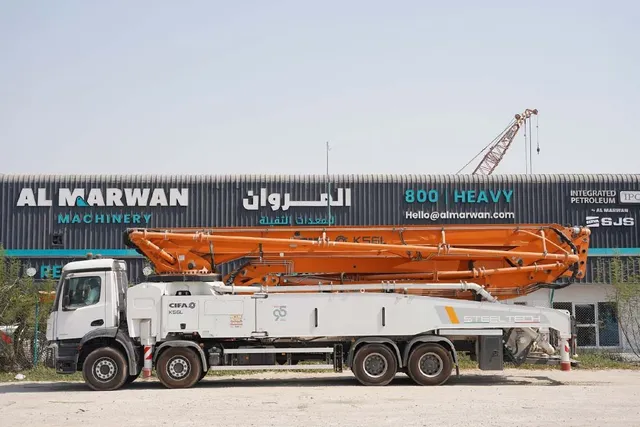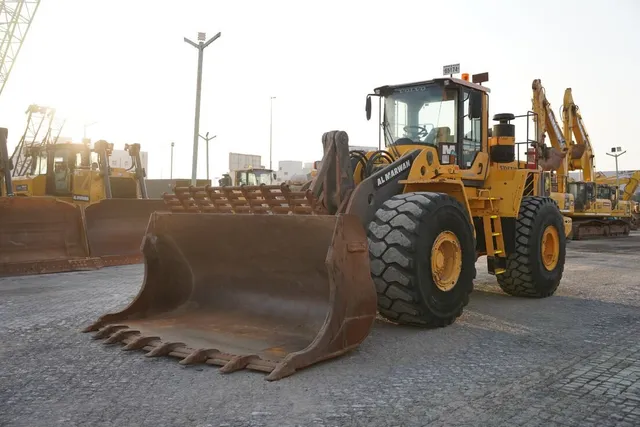Heavy Construction Machinery Trends for 2025: Emerging Innovations Reshaping the Industry
As 2025 approaches, the construction industry is on the cusp of transformative change. Heavy construction machinery is at the forefront of this evolution, driven by rapid advancements in technology, rising environmental concerns, and a heightened focus on safety and efficiency. Below, we explore the top trends poised to redefine heavy construction machinery in 2025 and beyond.
1. The Shift Toward Sustainable and Electric Equipment
Focus on Sustainability
The push for cleaner, more sustainable construction practices has led to a surge in electric and hybrid heavy construction machinery. Governments worldwide are tightening emissions regulations, prompting manufacturers and contractors to seek greener solutions.
Electric-Powered Machines
Battery-powered excavators, loaders, and cranes not only minimize carbon footprints but also offer reduced operational noise and lower maintenance costs over time.Hybrid Technology
Hybrid systems combine combustion engines with electric motors, enabling machines to switch between power sources efficiently. This translates to better fuel economy and reduced emissions.
Key Benefits
Lower operating costs in the long run
Compliance with strict environmental regulations
Quieter operations, particularly beneficial in urban settings
2. Advanced Automation and Semi-Autonomous Machinery
Rise of Robotics and AI
The construction sector is increasingly adopting automation to address labor shortages and enhance overall efficiency. By 2025, expect more heavy construction machinery equipped with autonomous or semi-autonomous capabilities.
Self-Driving Vehicles
Driverless dump trucks and bulldozers use sensor fusion and AI algorithms to navigate job sites, perform repetitive tasks, and reduce human error.Remote-Controlled Operations
In areas deemed high-risk or difficult to access, remote-controlled equipment ensures worker safety without compromising productivity.
Key Benefits
Streamlined operations with fewer delays
Improved safety and reduced operator fatigue
Potential for 24/7 machine utilization, accelerating project timelines
3. IoT Integration and Real-Time Telematics
Connected Construction Sites
The Internet of Things (IoT) is transforming how heavy construction machinery is tracked, managed, and maintained. By connecting machines to cloud-based platforms, project managers gain valuable insights into performance, usage, and potential issues.
Real-Time Monitoring
Telematics systems provide continuous updates on fuel consumption, engine health, and location tracking. This data helps in scheduling maintenance and optimizing equipment usage.Predictive Analytics
Machine learning models analyze sensor data to foresee potential malfunctions or component failures. Early detection prevents costly breakdowns and unplanned downtime.
Key Benefits
Enhanced asset management and logistics
Lower repair expenses through proactive maintenance
Data-driven decisions for improved project execution
4. Emphasis on Predictive Maintenance
Data-Driven Reliability
Predictive maintenance leverages IoT and big data analytics to anticipate machinery failures before they occur. As heavy construction machinery becomes more sophisticated, predictive maintenance strategies will become crucial to maximize uptime.
Smart Sensors
Advanced sensors continuously collect temperature, vibration, and pressure data, signaling abnormal variations to operators in real time.Maintenance Scheduling
Automated scheduling allows construction firms to plan repairs during off-peak times, eliminating disruptions and avoiding expensive emergency fixes.
Key Benefits
Extended machinery lifespan
Reduced operational costs tied to major repairs
Higher equipment availability for critical projects
5. Enhanced Safety Features and Operator Assistance
Protecting Workers and Worksites
The construction industry places a premium on safety, and the latest heavy construction machinery reflects this priority. Innovative safety features protect both equipment operators and on-site personnel.
Collision Avoidance Systems
Cameras, radar, and LiDAR sensors detect obstacles and alert operators or automatically stop machinery when a collision risk is detected.Ergonomic Cab Designs
Upgraded cabins feature adjustable seats, intuitive controls, and improved visibility to minimize operator fatigue and enhance overall comfort.Augmented Reality (AR) Training
AR-based training modules allow workers to practice in simulated environments before operating real heavy construction machinery, significantly reducing accidents caused by inexperience.
Key Benefits
Fewer job site accidents
Better working conditions for operators
Improved compliance with safety standards
6. Influence of 3D Printing and Modular Construction
Reimagining Job Site Logistics
Technologies like 3D printing and modular construction are gaining momentum, influencing the way heavy construction machinery is used on-site. These approaches require precise, specialized equipment to handle new building materials and methods.
Custom Attachments
3D printing enables the creation of unique or specialized attachments for excavators and cranes, tailored to specific project requirements.Modular Components
With pre-fabricated modules becoming more commonplace, heavy construction machinery must be adapted to lift and transport these uniquely designed components safely and efficiently.
Key Benefits
Faster construction timelines due to off-site fabrication
Reduced material waste
Increased demand for specialized machinery, driving innovation
Preparing for 2025 and Beyond
To remain competitive, companies in the construction industry should:
Invest in Training
Ensure that operators are up to speed with the latest automated systems and safety protocols.
Adopt Sustainable Practices
Transition to electric or hybrid heavy construction machinery to meet eco-friendly standards and improve long-term cost-effectiveness.
Leverage Data Analytics
Implement IoT and telematics solutions to harness real-time data and predictive insights for more efficient operations.
Stay Flexible
Keep an eye on emerging technologies like 3D printing and modular construction to adjust fleet capabilities accordingly.
By embracing these trends, construction firms can position themselves for success in a rapidly evolving market. Heavy construction machinery will continue to be a driving force behind large-scale projects worldwide. Those who invest in advanced, sustainable, and data-driven equipment will have a distinct competitive edge in 2025—and far beyond.







